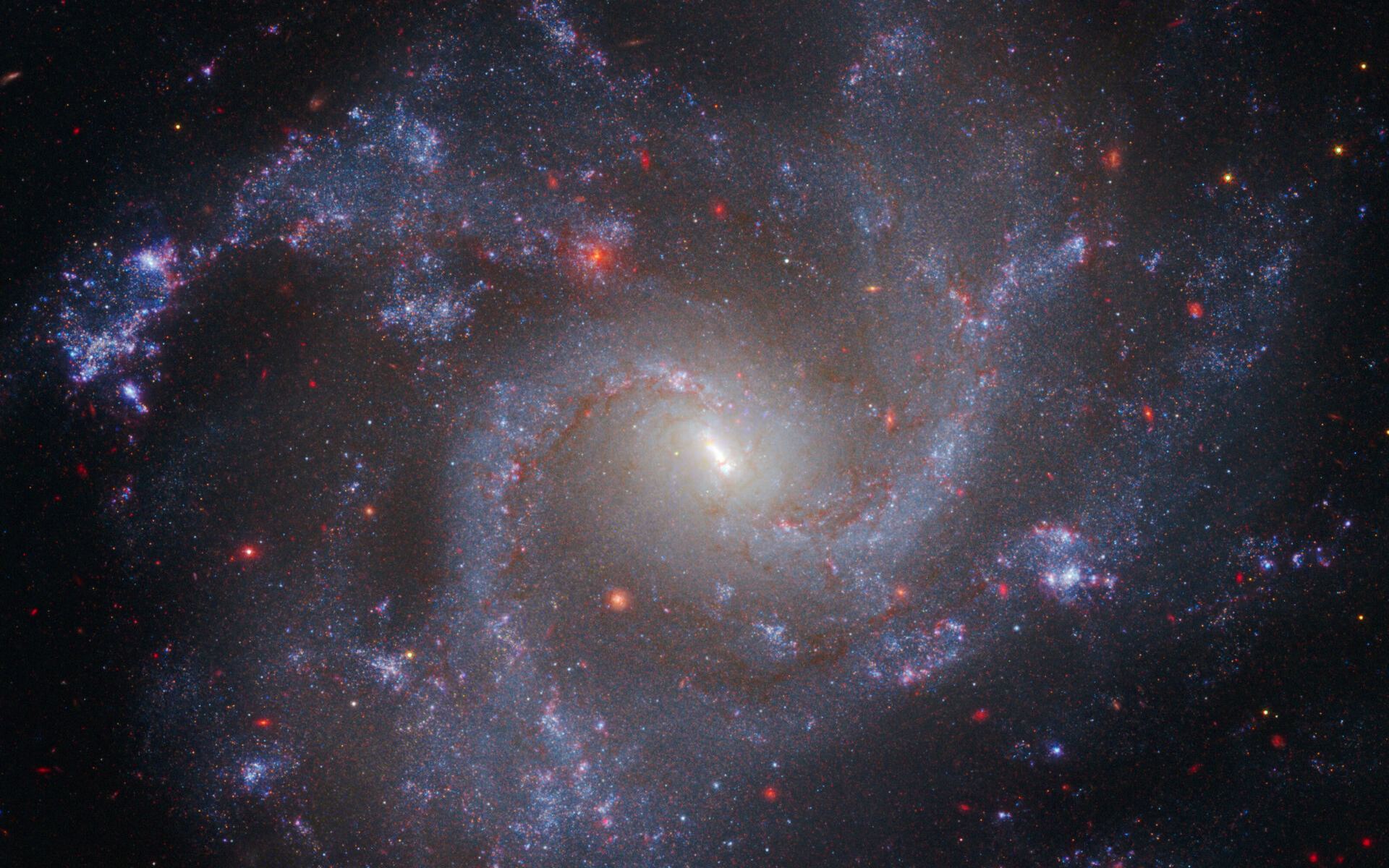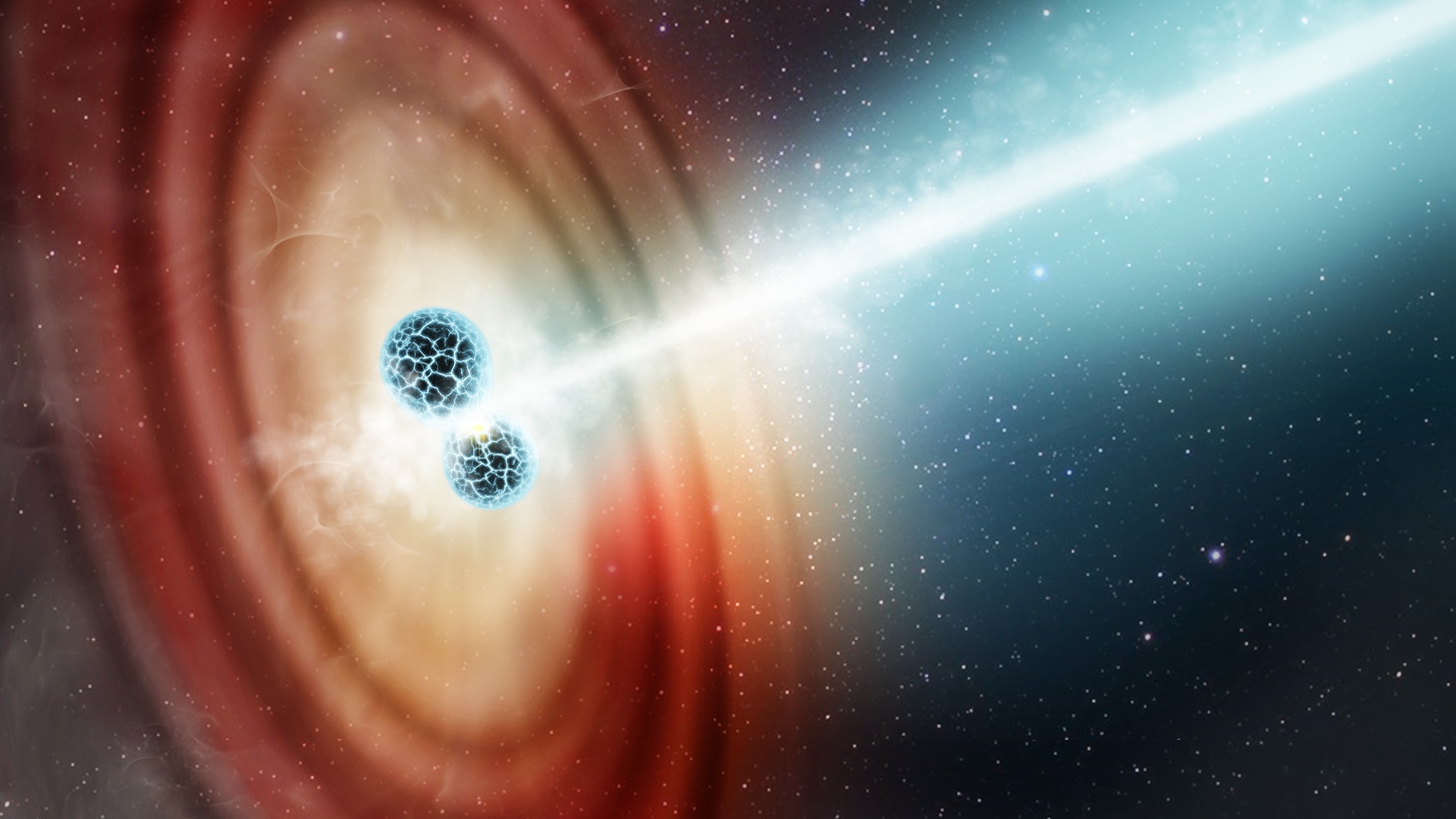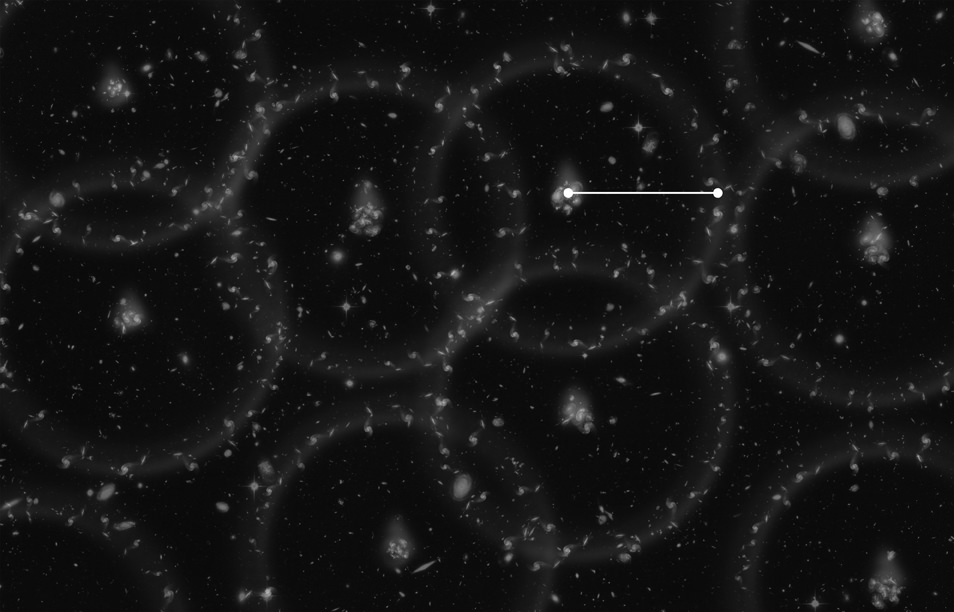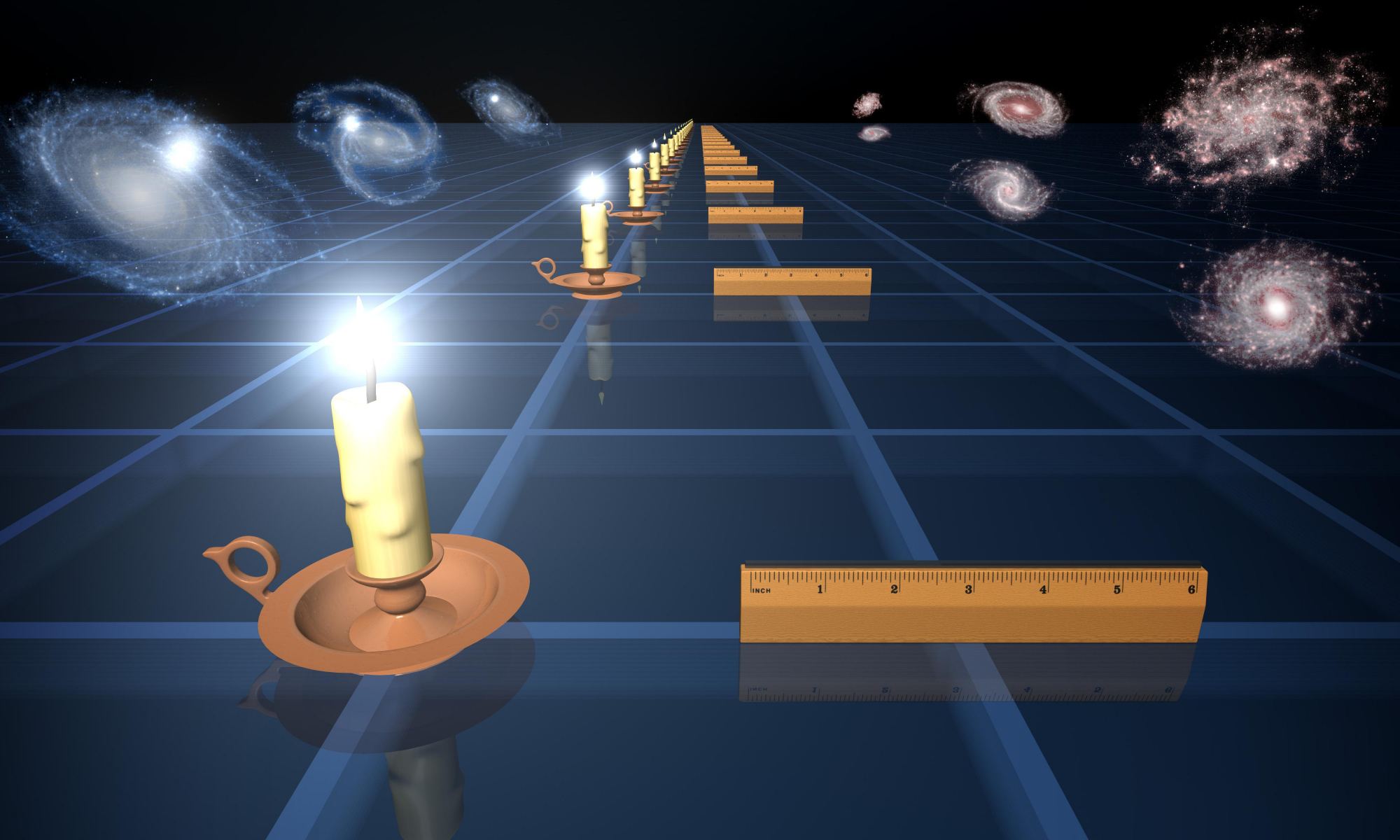We’ve known the Universe is expanding for a long time. The first solid paper demonstrating cosmic expansion was published by Edwin Hubble in 1929, based on observations made by Vesto Slipher, Milton Humason, and Henrietta Leavitt. Because of this, the rate of cosmic expansion is known as the Hubble constant, or Hubble parameter, H0. From this parameter, you can calculate things such as the age of the Universe since the Big Bang, so knowing the value of H0 is central to our understanding of modern cosmology.
Continue reading “Gravitational Lens Confirms the Hubble Tension”Polaris, Earth’s North Star, Has A Surprisingly Spotted Surface

Humanity’s been fortunate to have a star situated over Earth’s north pole. The star, known as Polaris, or the North Star, has guided many sailors safely to port. But Polaris is a fascinating star in its own right, not just because of its serendipitous position.
Continue reading “Polaris, Earth’s North Star, Has A Surprisingly Spotted Surface”Webb Continues to Confirm That Universe is Behaving Strangely

Over a century ago, astronomers Edwin Hubble and Georges Lemaitre independently discovered that the Universe was expanding. Since then, scientists have attempted to measure the rate of expansion (known as the Hubble-Lemaitre Constant) to determine the origin, age, and ultimate fate of the Universe. This has proved very daunting, as ground-based telescopes yielded huge uncertainties, leading to age estimates of anywhere between 10 and 20 billion years! This disparity between these measurements, produced by different techniques, gave rise to what is known as the Hubble Tension.
It was hoped that the aptly named Hubble Space Telescope (launched in 1990) would resolve this tension by providing the deepest views of the Universe to date. After 34 years of continuous service, Hubble has managed to shrink the level of uncertainty but not eliminate it. This led some in the scientific community to suggest (as an Occam’s Razor solution) that Hubble‘s measurements were incorrect. But according to the latest data from the James Webb Space Telescope (JWST), Hubble’s successor, it appears that the venerable space telescope’s measurements were right all along.
Continue reading “Webb Continues to Confirm That Universe is Behaving Strangely”Colliding Neutron Stars Could Help Measure the Expansion of the Universe

According to some in the astrophysical community, there has been something of a “Crisis in Cosmology” in recent years. Though astronomers are all aware that the Universe is in a state of expansion, there has been some inconsistency when measuring the rate of it (aka. the Hubble Constant). This issue arises from the Cosmic Distance Ladder, where astronomers use different methods to measure relative distances over longer scales. This includes making local distance estimates using parallax measurements, nearby variable stars, and supernovae (“standard candles”).
They also conduct redshift measurements of the Cosmic Microwave Background (CMB), the relic radiation left over from the Big Bang, to determine cosmological distances. The discrepancy between these two methods is known as the “Hubble Tension,” and astronomers are eager to resolve it. In a recent study, an international team of astrophysicists from the Niels Bohr Institute suggested a novel method for measuring cosmic expansion. They argue that by observing colliding neutron stars (kilonovae), astronomers can relieve the tension and obtain consistent measurements of the Hubble Constant.
Continue reading “Colliding Neutron Stars Could Help Measure the Expansion of the Universe”Another New Way to Measure Distance in the Universe: Baryon Acoustic Oscillations

Measuring cosmic distances is a major challenge thanks to the fact that we live in a relativistic Universe. When astronomers observe distant objects, they are not just looking through space but also back in time. In addition, the cosmos has been expanding ever since it was born in the Big Bang, and that expansion is accelerating. Astronomers typically rely on one of two methods to measure cosmic distances (known as the Cosmic Distance Ladder). On the one hand, astronomers rely on redshift measurements of the Cosmic Microwave Background (CMB) to determine cosmological distances.
Conversely, they will rely on local observations using parallax measurements, variable stars, and supernovae. Unfortunately, there is a discrepancy between redshift measurements of the CMB and local measurements, leading to what is known as the Hubble Tension. To address this, a team of astronomers from several Chinese universities and the University of Cordoba conducted a two-year statistical analysis of one million galaxies. From this, they’ve developed a new technique that relies on Baryon Acoustic Oscillations (BAO) to determine distances with a greater degree of precision.
Continue reading “Another New Way to Measure Distance in the Universe: Baryon Acoustic Oscillations”JWST is the Perfect Machine to Resolve the Hubble Tension
You’ve just found the perfect work desk at a garage sale, and you measure it to see if it will fit in your apartment. You brought a tape measure to size it up and find it’s 180 cm. Perfect. But your friend also brought a tape measure, and they find it’s 182 cm, which would be a smidge too long. You don’t know which tape measure is right, so you have a conundrum. Astronomers also have a conundrum, and it’s known as the Hubble tension.
Continue reading “JWST is the Perfect Machine to Resolve the Hubble Tension”

